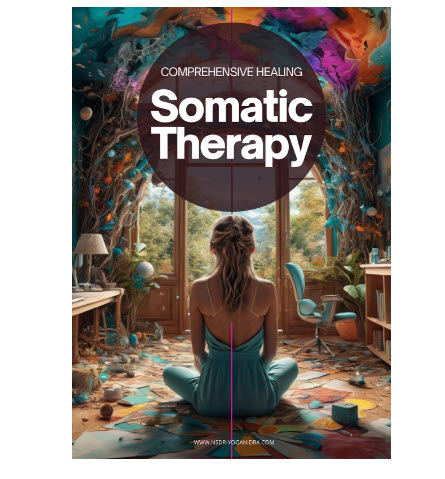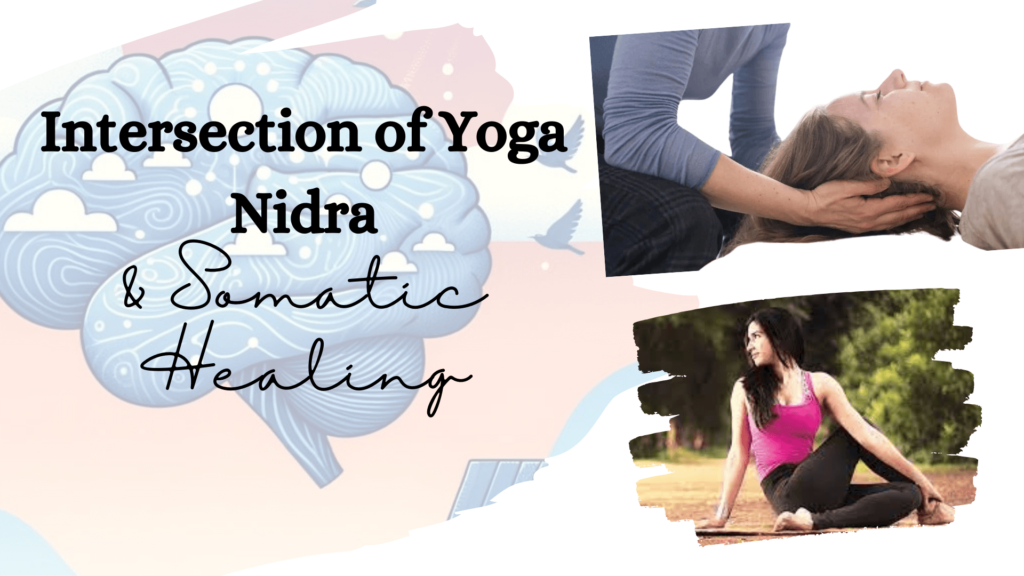Explore and learn about 7 most popular transformative somatic therapy techniques backed by scientific research that can help you connect with your body and heal.
This guide offers insight into powerful healing methods. Read on to start your journey.
The first time I experienced the power of Somatic breathwork is when a friend who had recently gone through a breakup, pulled me along into a holotropic breath-work class. I was a little skeptical ,beliveing this to be another fad popularized by Social Media.
As the class progressed, I found crying, then waves of lightness. I was so ‘in the moment.’ All thoughts vanished and I could hear my friend bawling next to me and then it all went quiet. It was a really powerful experience and without any words being shared, I knew she would be alright and she was.
In the realm of holistic healing, somatic therapy techniques have garnered significant attention for their potential to foster deep connections between the mind and body. Combining principles of psychology, psychotherapy, and traditional yogic practices, these techniques offer a comprehensive approach to healing.
I’ve decided to pick seven transformative somatic therapy techniques supported by peer-reviewed research, helping you unlock the innate wisdom of your body and embark on a journey towards comprehensive healing and if you ever need a magical dose of dopamine release, you know where to get it.
Understanding Somatic Therapies
Somatic therapies encompass a range of holistic approaches aimed at addressing the interconnection between the mind and body. A study published in the “Journal of Bodywork and Movement Therapies” (2009) highlights the efficacy of somatic therapies in reducing symptoms of anxiety, depression, and chronic pain. By integrating principles of psychology, psychotherapy, and somatic awareness, these techniques offer a holistic framework for addressing physical, emotional, and psychological challenges. This is a great addition to any practice that you’re already doing and will definitely give you a rich inner experience.
The Power of Somatic Experiencing (SE)
Somatic Experiencing (SE), developed by Dr. Peter Levine, is a trauma-focused somatic therapy aimed at resolving the lingering effects of traumatic experiences stored in the body much like the Kriyas in the path of Yoga. Research published in the *Journal of Traumatic Stress* (2006) demonstrates the effectiveness of SE in reducing symptoms of post-traumatic stress disorder (PTSD) and improving overall well-being in trauma survivors. Through gentle exploration of bodily sensations and titration techniques, SE facilitates empowerment and resilience in trauma recovery.
Hakomi Therapy: One of the leading Somatic therapy in 2024
Hakomi Therapy is a mindfulness-centered somatic therapy that integrates Eastern philosophies with Western psychotherapy. A study published in “Psychotherapy Research” (2017) highlights the efficacy of Hakomi Therapy in reducing symptoms of depression and anxiety and improving overall psychological well-being.” Through mindfulness, loving presence, and somatic awareness, Hakomi enables individuals to uncover and transform deeply held patterns and beliefs, leading to profound healing and transformation.
Hakomi Therapy fosters a safe, nurturing environment for clients to explore thoughts, emotions, and sensations. Through mindfulness, gentle inquiry, and somatic awareness, unconscious beliefs and patterns are uncovered. The therapist promotes non-violence and trusts in the organic unfolding of healing, guiding clients towards self-discovery and transformation.
Sensorimotor Psychotherapy: Leading method for Trauma release
Sensorimotor Psychotherapy combines cognitive and somatic psychology to address trauma and attachment issues. Research published in the “Journal of Trauma & Dissociation” (2018) underscores the effectiveness of Sensorimotor Psychotherapy in reducing symptoms of PTSD and improving emotional regulation. By accessing and processing somatic memories stored in the body through movement and mindfulness practices, individuals can promote healing and resilience.
Sensorimotor Psychotherapy integrates cognitive and somatic approaches to address trauma and attachment issues. The process involves several key steps:
1. Assessment: The therapist assesses the client’s history, symptoms, and current challenges to tailor the therapy to their needs.
2. Establishing Safety: Safety and stabilization are prioritized to ensure the client feels secure in exploring difficult emotions and sensations.
3. Mindfulness: Clients learn mindfulness techniques to increase awareness of bodily sensations, emotions, and thoughts as they arise in the present moment.
4. Somatic Exploration: The therapist guides clients in exploring bodily sensations associated with trauma, helping them develop greater tolerance and regulation.
5. Tracking: Clients learn to track bodily sensations and emotions, noticing how they shift and change over time.
6. Integration: Through exploration and processing, clients integrate fragmented aspects of their experience, promoting healing and resilience.
7. Attachment Work: Sensorimotor Psychotherapy often includes work on attachment patterns, helping clients develop healthier relational dynamics.
8. Resourcing: Clients learn self-regulation techniques and resources to manage distressing emotions outside of therapy sessions.
Overall, Sensorimotor Psychotherapy offers a holistic approach to healing trauma by addressing the body’s role in processing and integrating traumatic experiences. It empowers clients to develop greater self-awareness, regulation, and resilience.
Trauma Release Exercises (TRE)
Trauma Release Exercises (TRE) are simple yet powerful exercises designed to facilitate the release of tension and trauma stored in the body. A study published in “Frontiers in Psychiatry” (2020) demonstrates the effectiveness of TRE in reducing symptoms of anxiety and depression and improving emotional well-being. By engaging in rhythmic shaking and trembling, individuals can activate the body’s natural tremor response, leading to deep relaxation and restoration.
Trauma Release Exercises (TRE) offer a simple yet potent method for releasing tension and trauma stored in the body. To begin, one lies on the floor, allowing the body to naturally tremor and shake. These involuntary movements release stress and trauma, restoring the body’s equilibrium. Practitioners gradually build tolerance to these sensations, fostering resilience and emotional regulation. TRE sessions typically end with relaxation techniques to integrate the experience. Regular practice promotes emotional well-being and can alleviate symptoms of anxiety, depression, and PTSD. However, it’s essential to practice under the guidance of a qualified TRE provider for safe and effective results.
Dance/Movement Therapy
Dance/Movement Therapy utilizes expressive arts to access and process emotions stored in the body. Research published in “The Arts in Psychotherapy” (2019) highlights the efficacy of Dance/Movement Therapy in reducing symptoms of depression and anxiety which improves stress levels and builds physical strength. Through spontaneous movement and creative expression, individuals can tap into their inner resources and cultivate greater self-awareness, promoting emotional release and stress reduction.
Integrative Body Psychotherapy (IBP)
Integrative Body Psychotherapy (IBP) integrates traditional psychotherapeutic approaches with somatic awareness techniques to promote holistic healing. A study published in the “Journal of Humanistic Psychology” (2015) underscores the effectiveness of IBP in reducing symptoms of trauma-related distress and improving emotional well-being. By integrating the wisdom of the body, mind, and spirit, IBP facilitates deep exploration of underlying emotional patterns and beliefs, promoting self-compassion and resilience on the healing journey.
Integrating Somatic Therapy and its techniques in your life
Somatic therapy techniques and breathwork backed by scientific research offer powerful tools for connecting with the body and facilitating comprehensive healing. Whether navigating trauma, chronic pain, or seeking greater self-awareness, these transformative approaches hold the potential to bring profound transformation into your life. These movements are so simple and effective and this makes it easy to apply. By exploring the seven somatic therapy techniques outlined in this guide, you can embark on a journey towards becoming the best version of you and reclaiming your innate capacity for resilience and vitality. Dive into the world of Somatic therapies and healing, ask your providers how you can mix and match these therapies according to your needs and get ready to be pleasantly surprised!



